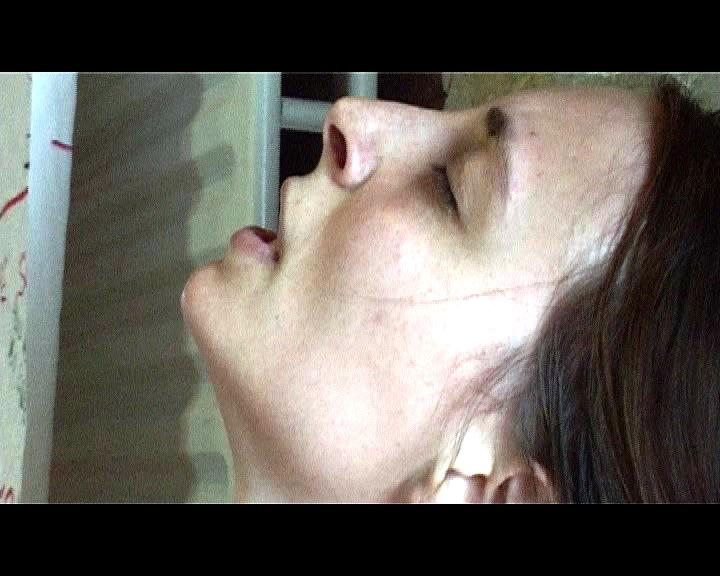

Perpetuum mobile II. En busca de una voz
Perpetuum mobile II. The quest for a voice
Tipo de producción/Type of Production
Documental/Documentary
Año de producción/Production Year
2008
País/Country
México
Duración/Running time
76 min.
Producción/Production
Dirección/Director
Dora Juárez
Guion/Screenplay
Dora Juárez
Fotografía/Cinematography
Dora Juárez y Omar Guzmán
Edición/Editing
Dora Juárez
Sonido/Sound
Alejandro Colavita
Música/Music
Germán Bringas y Dora Juárez
Dora Juárez
Guion/Screenplay
Dora Juárez
Fotografía/Cinematography
Dora Juárez y Omar Guzmán
Edición/Editing
Dora Juárez
Sonido/Sound
Alejandro Colavita
Música/Music
Germán Bringas y Dora Juárez
Sinopsis/Synopsis
Perdí mi voz. Yo sé que de mi boca siempre ha salido algo, pero un día me detuve a escucharlo
y me avergoncé. La narradora ha perdido su voz y parte en busca de ella. Un recorrido por diferentes voces del mundo la lleva a aproximarse a las nociones de pertenencia, lugar y arraigo. Cada voz representa a su propio lugar, a su propia raíz. Los personajes que entretejen este documental de ensayo son Ustad Zia Fariduddin Dagar, uno de los mayores exponentes del canto Dhrupad de La India; Enrique Pardo, exmiembro de la Compañía de Teatro de la Voz del legendario Roy Hart y director del Pantheatre de París; Los Cardencheros de Sapioriz, Durango, últimos exponentes vivos del canto cardenche del norte de México; Werner Herzog, afamado director de cine, durante la grabación de la música para su película The Wild Blue Yonder, a quien vemos interactuar con los cantantes y músicos en un estudio en París; y la directora misma, quien narra la historia. Todos los personajes se ven íntimamente ligados con el quehacer vocal, desde diferentes perspectivas pero siempre con una misma intención: revelar a través de la voz ese algo profundamente íntimo e innombrable que habita dentro de cada ser. Alrededor de este eje saltan muchas otras voces mostrando su propia esencia o, como diría Martín Buber, su propia uniqueness. El día que encuentres tu lugar encontrarás tu voz: frase que obsesiona a la directora y que la lleva a realizar todo este periplo.
I lost my voice, I know that my mouth has always made some kind of sound, but one day I stopped to listen and I was ashamed The narrator has lost her voice and partly in search of same. A journey through the different voices of the world leads us closer to the notions of belonging, place and rootedness. Each voice represents its own place and root. The characters interweaved in this documentary are Ustad Zia Fariduddin Dagar, one of the greatest Indian Dhrupad singers; Enrique Pardo former member of the theatre company of the legendary Roy Hart, and director of the Paris Pantheatre ; The Cardencheros of Sapioriz, Durango, last living cardenche singer from northern Mexico; Werner Herzog, a famous film director, while recording the music for his film The Wild Blue Yonder who we see interact with the singers and musicians in a studio in Paris as well as the director, who tells the story. All the characters are intimately linked with the voice work from different perspectives but always with the same intention: to reveal through the voice that something deeply intimate and unnamable dwells within each human being. Many other voices circle around this axis, showing their very essence, or as Martin Buber would say, their own uniqueness. The day you find your place, you will find your voice is a phrase that haunts the director and that leads us to undertake this journey.
I lost my voice, I know that my mouth has always made some kind of sound, but one day I stopped to listen and I was ashamed The narrator has lost her voice and partly in search of same. A journey through the different voices of the world leads us closer to the notions of belonging, place and rootedness. Each voice represents its own place and root. The characters interweaved in this documentary are Ustad Zia Fariduddin Dagar, one of the greatest Indian Dhrupad singers; Enrique Pardo former member of the theatre company of the legendary Roy Hart, and director of the Paris Pantheatre ; The Cardencheros of Sapioriz, Durango, last living cardenche singer from northern Mexico; Werner Herzog, a famous film director, while recording the music for his film The Wild Blue Yonder who we see interact with the singers and musicians in a studio in Paris as well as the director, who tells the story. All the characters are intimately linked with the voice work from different perspectives but always with the same intention: to reveal through the voice that something deeply intimate and unnamable dwells within each human being. Many other voices circle around this axis, showing their very essence, or as Martin Buber would say, their own uniqueness. The day you find your place, you will find your voice is a phrase that haunts the director and that leads us to undertake this journey.
Compañías productoras/Production companies
Centro de Capacitación Cinematográfica, A.C.
Reparto/Cast
Enrique Pardo, Ustad Zía Fariduddin Dagar, Werner Herzog, Juan Pablo Villa, Los Cardencheros de Sapioriz, Germán Bringas, Szuszana Varconi, Mola Syla, Cuncordi d´Orosei y Samuel Kiczkovsky
Locación/Location
Mumbai y Rajastán (India); París y Malerargues (Francia); Córdoba y Rosario (Argentina); Durango y Ciudad de México (México)
Premios/Awards
·Premio Cine en construcción 15 del XXI Encuentro Cines de América Latina en Toulouse, Francia 2009
Contacto/Contact
Centro de Capacitación Cinematográfica, A.C.
Calz. de Tlalpan 1670
Col. Country Club
CP 04220, Coyoacán, Ciudad de México
Tels.: (52-55) 4155 0090 ext. 1813
divulgacion@elccc.com.mx
Enlace a página 1
Calz. de Tlalpan 1670
Col. Country Club
CP 04220, Coyoacán, Ciudad de México
Tels.: (52-55) 4155 0090 ext. 1813
divulgacion@elccc.com.mx
Enlace a página 1
¿Detectaste algún error en este registro?
Fecha de última modificación: 16 de febrero del 2015, 11:42
Información proporcionada por:
Red Nacional de Información Cultural
Instituto Mexicano de Cinematografía
u-cm
Información proporcionada por:
Red Nacional de Información Cultural
Instituto Mexicano de Cinematografía
u-cm
